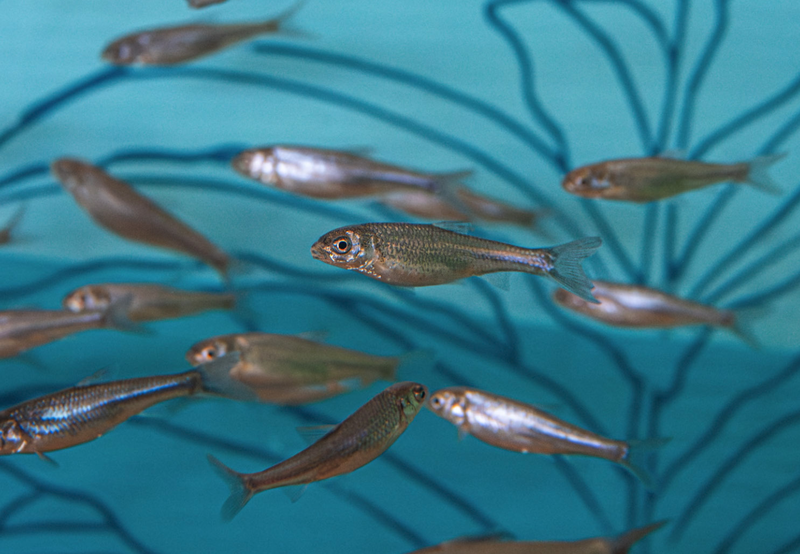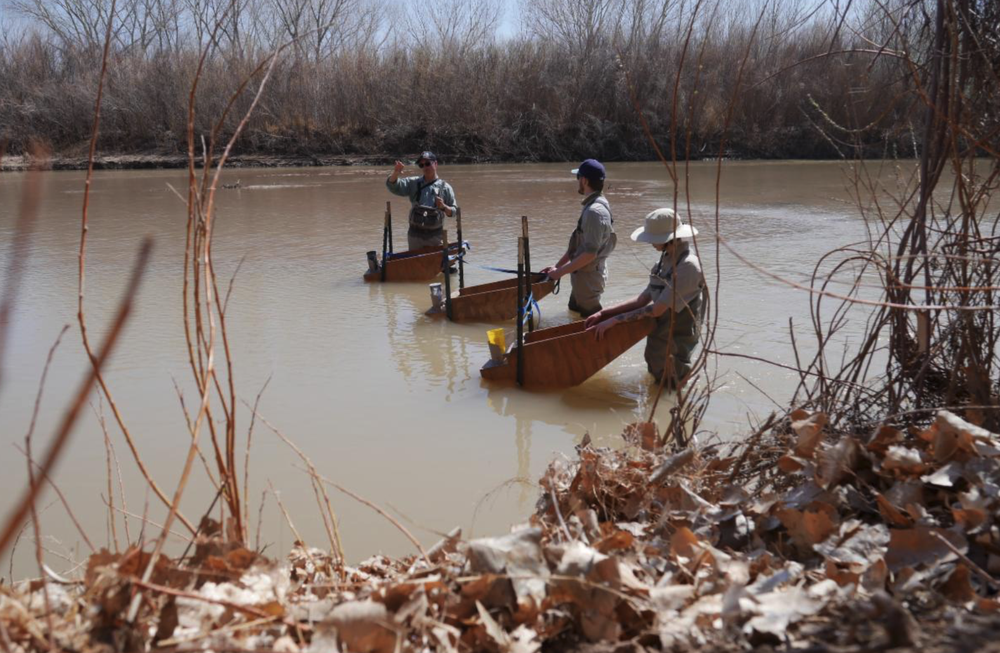
From Drought to Downpour: ABQ BioPark Supports Silvery Minnow Recovery in Face of Climate Extremes
These efforts are part of a broader, long-term recovery program for some of the Southwest’s most vulnerable aquatic life.
This spring, the ABQ BioPark’s Aquatic Conservation Facility (ACF) played a critical role in a two-part success story to save one of North America’s most endangered freshwater fish — the Rio Grande silvery minnow — as New Mexico’s climate swings between drought and flood.
Before the rains arrived, stretches of the Rio Grande began drying out — threatening to strand and kill native fishes as temperatures rose and water receded. BioPark biologists mobilized quickly to support biologists from the U.S. Fish and Wildlife Service (USFWS) who rescued fish from isolated pools, including reproductively ready silvery minnows.
The rescued fish were brought to the ACF, and in a remarkable outcome, they successfully spawned. Half of the fertilized eggs were hatched under the care of BioPark staff, and 60,000 young minnows are now growing at the ACF. The remainder of the fertilized eggs (64,000) were sent to the Southwestern Native Aquatic Resources and Recovery Center in Dexter, NM.
In early May, agencies cooperating through the Middle Rio Grande Endangered Species Collaborative Program coordinated a pulse flow — a temporary release of irrigation water to mimic natural spring floods. The pulse, followed just days later by the long-awaited rains, sparked a natural spawning event. The USFWS, BioPark, and other partner teams moved swiftly into the field and collected more than 46,000 eggs directly from the river, ensuring the best possible start for the next generation.
“We’re up against the realities of climate change — and this year shows just how important it is to be ready to act under any conditions,” said BioPark Director Brandon Gibson. “Whether the river is running low or rising fast, we’re doing everything we can to support silvery minnow recovery.”
These efforts are part of a broader, long-term recovery program that has seen more than 1 million silvery minnows hatched and released through collaborative conservation breeding over the past two decades. The ABQ BioPark’s Aquatic Conservation Facility is dedicated to the propagation and care of this species.
The stakes are high. Once found throughout the Rio Grande, silvery minnows now inhabit less than 7% of their historic range. These fish form the base of the food web and indicate the health of the entire river ecosystem. If lost, far more than a single species is impacted.
As climate extremes become more frequent, facilities like the ACF are becoming lifelines for native species, ensuring they can persist even when natural systems fail. The ACF also houses other species that are extinct in the wild, ensuring they persist on Earth under professional care until habitat restoration and protection efforts can provide a place for them to once again flourish in nature.
The BioPark is committed to offering a rare opportunity to see conservation in action for some of the Southwest’s most vulnerable aquatic life.

Three BioPark staff stand in the Rio Grande river with fish egg collector boxes. Photo by Mikaela Santistevan.
